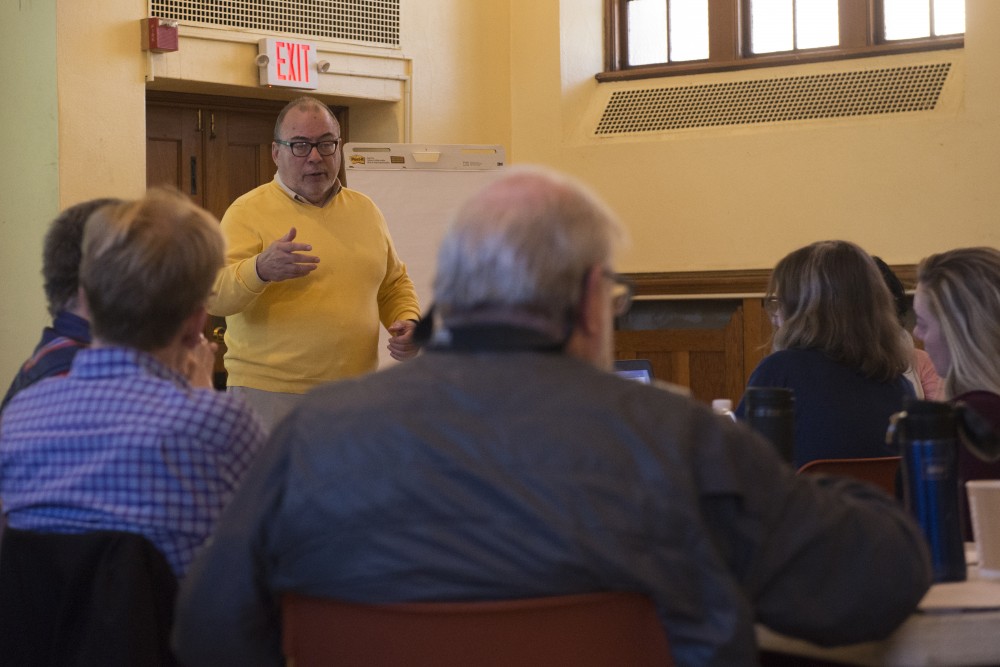Questions about Dinkytown’s shifting landscape brought University of Minnesota students and Marcy-Holmes residents together this weekend to envision the area’s future.
The area’s recent population and development boom spurred the neighborhood to map out their ideal greater Dinkytown at a workshop Saturday. Organizers asked attendees to consider how they’d like to shape the character of Dinkytown through the establishment of new businesses and amenities.
The event is part of a collaborative project between Marcy-Holmes Neighborhood Association and the University to gather student feedback on how to improve the area.
Identity changes to the area are nothing new. Since the establishment of Dinkytown as a business district in the early 1900s, the area has experienced shifting public perception, said Haila Maze, a former City of Minneapolis planner on the project.
The workshop brought students and older residents together to offer their perspectives on Dinkytown in small groups. Some older residents said many students view Dinkytown as an entertainment district rather than a community, while students said they were surprised by how many older residents lived in Marcy-Holmes.
“Sometimes, as a student, everything I think is very student-oriented. I just forget there are other people besides students I don’t interact with and I probably should,” said Alex Johnson, a University graduate student.
One discussion group said the community needs to take steps to be more welcoming to international students, who may struggle to access resources they need in the neighborhood.
Lynn Huang, an Off-Campus Living neighborhood liaison, said international students feel detached from the neighborhood because they don’t stay long and often don’t know where to make connections with other residents.
“There’s less incentive for them to get involved in the community because it’s harder and harder for them to get a visa to stay here,” said Huang.
Dinkytown businesses have grappled with challenges like the advent of ridesharing and food delivery services, which open up competition to almost anywhere in Minneapolis, said some residents and local business owners.
To encourage students to patronize local businesses, MJB Consulting President Michael Berne said Dinkytown should work to establish more social destinations, like cafes or bars, where visitors can go to feel a sense of belonging.
“We want them to feel, as soon as they’re outside campus, ‘I’m home,’” said Kent Kramp, president of the Dinkytown Business Alliance at the workshop.
Organizers wrapped up the event by asking attendees to imagine Dinkytown 10 years from now. Nearly every discussion group mentioned the need for more outdoor amenities and organized activities.
“I just want active community engagement. More places where you can just hang out and not necessarily buy something or consume something,” said University sophomore Jessie Ernster.
Depending on project funding, organizers hope to host a follow-up event to present the small group findings to the wider community.













